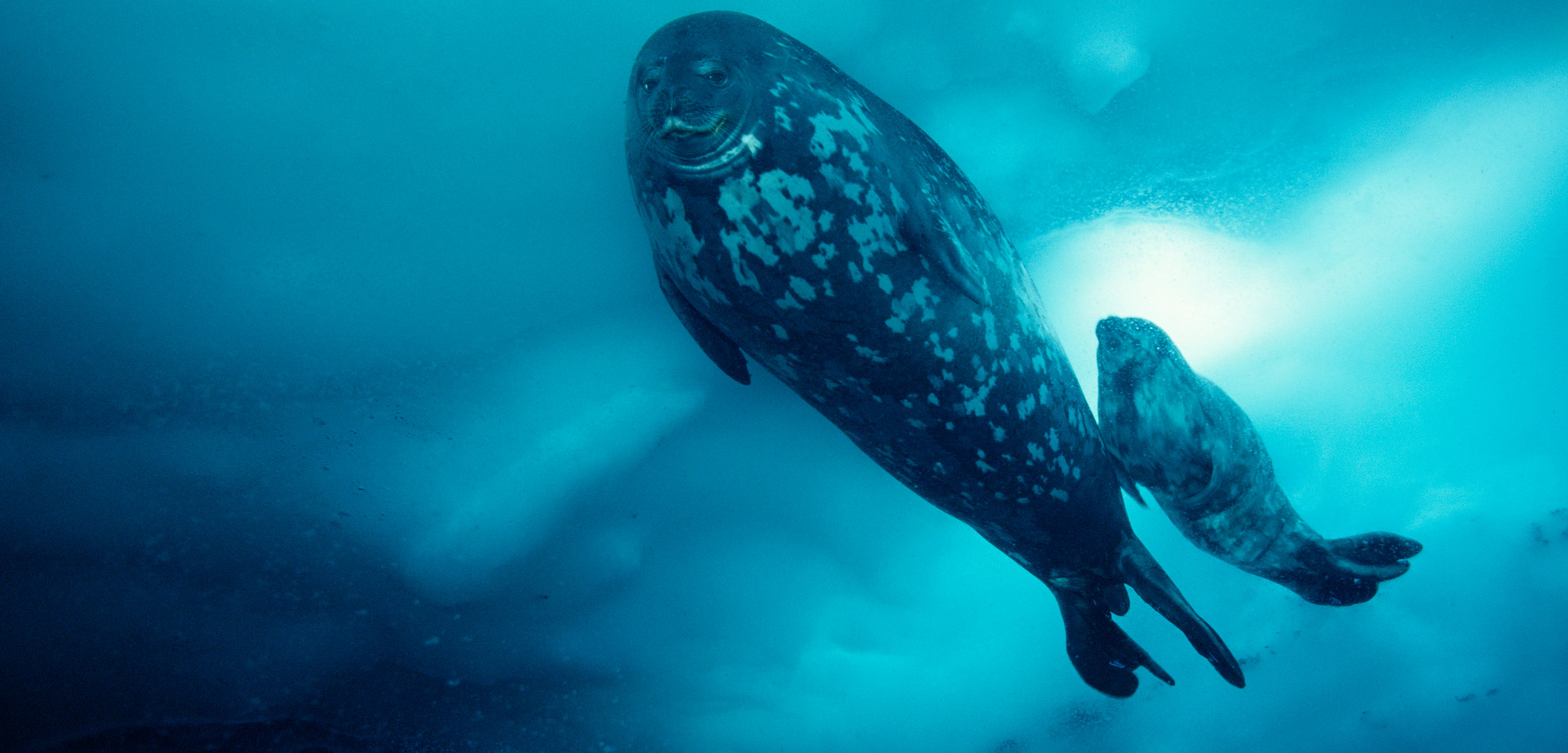Animal Trainers Gone Wild
A research team says no to drugs and uses the skills of animal trainers to calm wild Weddell seals.
Article body copy
For the past 34 years, Terrie Williams has been studying Weddell seals. Every few years, she heads to the Antarctic for 10 weeks at a time to study seal behavior. Her recent focus is on how the seals navigate under the thick ice; in particular, she’s looking for evidence that the animals rely on geomagnetic perception.
If she can prove that seals use Earth’s magnetic fields to find their way, like sea turtles, it will be the first time a marine mammal has been shown to do so. But, in the process, Williams has also begun to change scientists’ understanding of how to work with animals in the wild.
This year, she and the animal trainers who recently began to accompany her on her expeditions accomplished an important first. “We decided to try something pretty radical,” Williams says, “which was to do the entire expedition working with Weddell seals and never have to resort to sedating them.”
In Williams’s lab, animal trainers work with captive seals, coaxing them into lying still for medical checkups, or getting them to perform various activities to collect important data. In the field, however, Williams—like most large-animal biologists—has always relied on anesthesia. But over the past five years, the trainers have begun to accompany Williams to the Antarctic. Their presence, and their unique skill set, has fundamentally changed how the work is done.
Beau Richter has been working alongside Williams as an animal trainer for almost 12 years. If you mention animal training, most people think of teaching tricks—like jumping through hoops or balancing a beach ball. But a trainer’s most fundamental skill is being an expert observer, he says.
“We’ve become very good at being able to read animal behavior and being able to interpret what that behavior means,” he says.
During one of Williams’s expeditions, a typical data collection session involves measuring the seal’s size and weight, taking ultrasound measurements of its blubber, and attaching a tracking device. That last step involves cleaning the seal’s fur, applying glue, letting it dry, and attaching a neoprene patch. It’s not something you’d expect a wild animal to tolerate, even one as calm as a Weddell seal.
But the trainers’ ability to read and respond to the wild seals’ cues has allowed Williams and her team to keep the seals calm enough to study them without anesthetic, the use of which can be risky.
For the first few seasons, they started small—the trainers’ role was mostly to help identify which of the animals would be easiest to work with. Eventually, they experimented with removing tracking tags without anesthetic. They then tried applying the tracking tag, for a few steps at least, without sedatives. This past season marked the first time they were comfortable conducting the entire data collection procedure without putting the seals to sleep.
Throughout the process, the trainers were watching the animals’ reactions. They orchestrated the scientists’ movements, telling them when to pause, and how and where to move. Their familiarity with the species allows them to understand subtle cues that a seal is becoming agitated, such as widened eyes or quickened breathing. A big part of it, says Richter, was “getting people to be mindful of their behavior around the animals, and watching how that affected the behavior of the animals.” Most researchers are used to working with animals under sedation, so that wasn’t necessarily something they were used to.
Ken Ramirez, an animal training expert with more than 40 years of experience, says that as far as he knows, the team’s approach is unique. He says many zoos and labs do hands-on training in captivity, and he does hands-off work in the field—including, in one case, training wild chimps to be alert to the presence of poachers. But he knows of no other case of this kind of hands-on research being done in the field with the help of trainers.
The rarity of Williams’s approach to fieldwork does not surprise Ramirez. He says most professionals, such as zoologists and veterinarians, have misconceptions about what animal training can do.
The trainers on Williams’s team aren’t doing “what most people think of as training,” he says. But setting up situations to get certain behavior from the animal is exactly what training is, he adds.
“You’re not teaching the animals specific things, but you’re using good behavioral knowledge to make decisions about when you approach, when you retreat. You’re still shaping that animal’s behavior, but you’re doing it in a very clever way,” he says.
Ramirez says Williams’s work is very exciting, and the approach could be used in research on a range of wild animals. He hopes more researchers will consider using trainers in the field.
Using trainers and studying large wild animals without the use of sedatives are concepts that may surprise other scientists, Williams says, because what they managed to do surprised even her own team.
“We were shocked, really, it was pretty amazing,” she says. “But that’s the magic of a trainer.”

